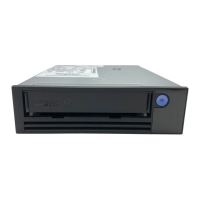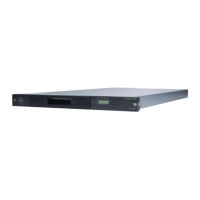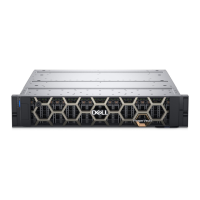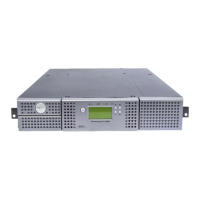S
SAS. Serial Attached SCSI (SAS) Interface.
scratch cartridge.
A data cartridge that contains no useful
data, but can be written to with new data.
SCSI. See Small Computer Systems Interface.
SCSI connector.
Located at the rear of the tape drive, the
connector that facilitates commands to
and from the server, and to which the
internal SCSI cable of an enclosure
connects.
SCSI drive sense data.
In response to inquiry from the server
about an error condition, a packet of SCSI
sense bytes that contains information
about the error and that is sent back to
the server by the drive.
SCSI log sense data.
In response to inquiry from the server
about the tape drive's error logs and
counters, a packet of SCSI sense bytes
which contains that information and
which is sent back to the server by the
drive. Log sense data is used to diagnose
problems, especially if the problems are
intermittent.
second.
One sixtieth of a minute.
sense data.
Data that describes an I/O error. Sense
data is presented to a server in response
to a Sense I/O command.
server. A functional unit that provides services to
one or more clients over a network.
Examples include a file server, a print
server, or a mail server. Synonymous with
host.
single-character display.
Located at the front of the tape drive, an
LED that presents an alphabetical or
numeric code which represents a
diagnostic or maintenance function, error
condition, or informational message.
sleep mode.
A power-management function that
causes the tape drive's electronics to
automatically enter a low-power mode by
which to conserve energy.
Small Computer Systems Interface (SCSI).
A standard used by computer
manufacturers for attaching peripheral
devices (such as tape drives, hard disks,
CD-ROM players, printers, and scanners)
to computers (servers). Pronounced
"scuzzy." Variations of the SCSI interface
provide for faster data transmission rates
than standard serial and parallel ports (up
to 160 megabytes per second). The
variations include:
v Fast/Wide SCSI: Uses a 16-bit bus, and
supports data rates of up to 20 MBps.
v SCSI-1: Uses an 8-bit bus, and supports
data rates of 4 MBps.
v SCSI-2: Same as SCSI-1, but uses a
50-pin connector instead of a 25-pin
connector, and supports multiple
devices.
v Ultra SCSI: Uses an 8- or 16-bit bus,
and supports data rates of 20 or 40
MBps.
v Ultra2 SCSI: Uses an 8- or 16-bit bus
and supports data rates of 40 or 80
MBps.
v Ultra3 SCSI: Uses a 16-bit bus and
supports data rates of 80 or 160 MBps.
v Ultra160 SCSI: Uses a 16-bit bus and
supports data rates of 80 or 160 MBps.
software.
Programs, procedures, rules, and any
associated documentation pertaining to
the operation of a computer system.
speed matching.
A technique used by the tape drive to
dynamically adjust its native
(uncompressed) data rate to the slower
data rate of a server. Speed matching
improves system performance and
reduces backhitch.
T
TapeAlert.
A patented technology and ANSI
standard that defines conditions and
problems that are experienced by tape
drives.
TapeAlert flags.
Status and error messages that are
generated by the TapeAlert utility and
display on the server's console.
62 Dell PowerVault LTO Tape Drive: User's Guide
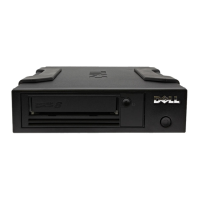
